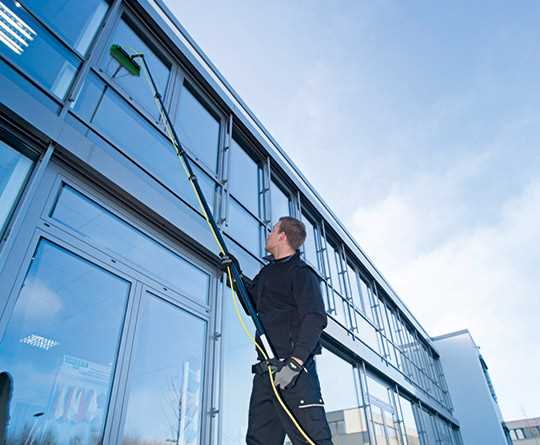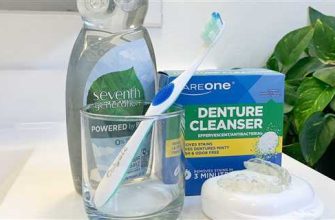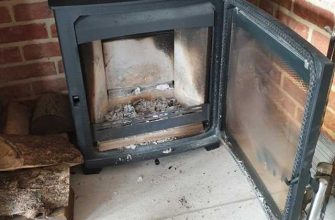
When it comes to cleaning, you’d want to make sure that you haven’t left anything behind. But traditional cleaning methods would often produce streaks or smudges on surfaces, especially windows. That’s where pure water cleaning comes in. This method uses filtered water to clean surfaces, leaving them spotless and sparkling.
So, how does pure water cleaning work? The answer lies in the process of purifying the water. Instead of using tap water, which may contain impurities, pure water cleaning utilizes filtered water to ensure the highest quality. These filters can remove any contaminants present in the water, such as minerals and chemicals. As a result, the water used for cleaning is completely pure and free from any potential residue.
If you’re wondering how to get started with pure water cleaning, the first step is to find a reliable method to purify the water. There are various options available, including portable filters and larger containers. You can also choose to install a dedicated water purification system, specifically designed for pure water cleaning. Whatever method you choose, make sure it can effectively remove impurities and provide you with the desired level of water purity.
Once you have your purified water ready, using it for cleaning is a breeze. Simply fill up a water-fed pole system or a sprayer with the pure water and start cleaning. The pure water will effectively dissolve dirt and grime on surfaces, leaving them clean and streak-free. And the best part? Since pure water cleaning doesn’t leave any residue, the surfaces will stay cleaner for longer, making your cleaning routine easier and more efficient.
In conclusion, pure water cleaning is a fantastic way to achieve sparkling clean surfaces, be it windows or any other type of surface. By using purified water, you can ensure that no residues or streaks are left behind. This method saves you time and effort in the long run, as surfaces will stay cleaner for longer. So, if you want to see the benefits of pure water cleaning for yourself, give it a try and witness the amazing results.
- A Guide for Sparkling Clean Surfaces
- The Benefits of Pure Water Cleaning
- 1. Enhanced Purity:
- 2. No Chemicals:
- 3. Cost-effective:
- 4. Easier Window Cleaning:
- 5. Better Results:
- 6. Versatility:
- 7. Rainwater as an Alternative:
- Why Choose Pure Water for Window Cleaning
- How to Make Pure Water for Window Cleaning
- What You’ll Need
- How to Purify Water for Window Cleaning
- The Process of Filtering Tap Water
- Choosing the Right Filtration System
- The Window Cleaning Learning Method
- The Pure Water Filtration System
- Choosing the Right Filtration System
- How the Filtration System Works
- Draining the Filtration System
- Benefits of the Filtration System
- The Rain Filtration Method
- Conclusion
- Tips for Maintaining Pure Water Quality
- Monitoring and Changing Filters
- Knowing When to Refill
- Collecting Rainwater
- Draining Purified Water
- Video:
- Unger HydroPower Pure Water Window Cleaning System
A Guide for Sparkling Clean Surfaces
When it comes to achieving sparkling clean surfaces, using pure water is something that you should consider. Pure water cleaning is a method that utilizes water without any impurities to achieve a spotless finish on windows, glass, and other surfaces. But where does this pure water come from?
Once rainwater falls from the sky, it goes through a natural filtering process as it makes its way down to the ground. This rainwater is then collected and drained into a tank to be purified.
To purify the water and make it suitable for cleaning, the first thing you would need is a couple of filters. These filters are designed to remove any particles, sediment, or debris that may be present in the water. The filtered water is then passed through a reverse osmosis unit, which further removes impurities and minerals.
Next, the water passes through a deionization resin, which removes any remaining ions and minerals. This ensures that the water is completely pure and free from any contaminants.
But how do you know if the water is pure enough for cleaning? This is where a TDS (Total Dissolved Solids) meter comes into play. By using this meter, you can monitor the purity of the water by taking readings of the TDS levels. The lower the TDS reading, the purer the water.
Once you have obtained pure water, you can now use it to clean windows and other surfaces. This method works particularly well on windows, as it leaves them streak-free and crystal clear. The lack of impurities in the water prevents any residue from being left behind, resulting in a spotless finish.
To start using pure water for cleaning, you will need a pure water system. These systems typically consist of a water tank, filters, and a pump. The pure water is then pumped through a telescopic pole with a brush attachment to clean the surface.
When using the pure water cleaning method, it’s important to note that the water dries longer than traditional methods using soap and detergent. This is because the absence of impurities in the water allows it to dry without leaving any residue.
Some people may be skeptical about using pure water for cleaning, thinking that tap water can do the job just fine. While tap water can indeed clean to a certain extent, it often leaves behind mineral deposits and streaks. Pure water, on the other hand, ensures a completely clear and streak-free finish.
In conclusion, using pure water for cleaning is a highly effective method for achieving sparkling clean surfaces. It removes impurities, leaves no residue, and provides a streak-free finish. By investing in a pure water system and following the purification process, you can enjoy the benefits of this cleaning method and have spotless windows and surfaces.
The Benefits of Pure Water Cleaning
When it comes to cleaning windows and other surfaces, using filtered water can provide numerous benefits. Let’s take a closer look at some of the advantages of pure water cleaning:
1. Enhanced Purity:
Regular tap water may contain minerals and impurities that can leave streaks and spots on windows. Pure water cleaning eliminates these impurities, ensuring a crystal-clear finish.
2. No Chemicals:
Unlike traditional cleaning methods that involve using detergents and cleaning solutions, pure water cleaning only requires water. This makes it a safer and eco-friendly option.
3. Cost-effective:
Pure water cleaning does not require purchasing expensive cleaning ingredients. All you need is a pure water system and you can produce an unlimited amount of pure water without any extra cost. This allows you to save money in the long run.
4. Easier Window Cleaning:
Pure water cleaning makes window cleaning easier and quicker. There is no need for ladders or scaffolding as the water can reach even high windows. This saves time and effort.
5. Better Results:
Since pure water removes all dissolved minerals, windows cleaned with pure water stay cleaner for longer. This means fewer cleaning sessions and less maintenance for your windows.
6. Versatility:
Pure water cleaning is not limited to windows. You can use it to clean solar panels, glass roofs, facades, and other surfaces. This makes it a versatile cleaning method for various purposes.
7. Rainwater as an Alternative:
If you don’t have access to purified water, rainwater can be a good alternative. Rainwater is naturally filtered and contains fewer minerals compared to tap water, making it suitable for pure water cleaning.
In conclusion, the benefits of pure water cleaning are clear. It is a cost-effective, eco-friendly, and efficient method for achieving sparkling clean surfaces. Whether you choose to invest in a pure water system or use rainwater as a natural option, pure water cleaning can provide excellent results without the need for chemicals or additional cleaning ingredients.
Why Choose Pure Water for Window Cleaning
When it comes to window cleaning, choosing pure water as your cleaning agent can make all the difference. Pure water cleaning is a method that uses only water to clean windows, without the need for any additional chemicals or detergents.
So, why should you choose pure water for your window cleaning needs? Well, there are several advantages:
- No chemicals or detergents: Pure water does not contain any chemicals or detergents, making it a safe and environmentally friendly option. This means that you can clean your windows without worrying about harmful residues that may be left behind.
- Effective cleaning: Pure water is an excellent cleaning agent in its own right. It has the ability to dissolve and remove dirt, grime, and other contaminants from your windows, leaving them sparkling clean.
- No streaks or spots: One common problem with traditional window cleaning methods is the formation of streaks or spots. This is often caused by the residue left behind by cleaning agents. With pure water, you can eliminate this problem and achieve a streak-free finish.
- Long-lasting results: Pure water cleaning can provide long-lasting results. Since there are no chemicals or detergents involved, the cleaning effect of pure water can last longer compared to traditional methods.
- Easier and safer: Pure water cleaning eliminates the need for ladders or climbing up to reach high windows. The pure water is fed through a long reach pole with a brush on the end, allowing you to clean windows from the ground. This makes the cleaning process both easier and safer.
Now you might be wondering, how does pure water cleaning work? Well, it’s quite simple. Pure water is produced by using a water purification system that removes impurities, minerals, and dissolved solids from tap water.
The purity of the water is measured using a TDS (Total Dissolved Solids) meter. The lower the TDS reading, the purer the water. Ideally, you would want a TDS reading of zero. However, in practical terms, a reading below 10 is considered good enough for pure water cleaning.
By learning how to purify your own water and using this method, you can save money by not having to purchase costly cleaning agents or store-bought pure water. It’s a convenient and cost-effective solution for window cleaning.
So, if you want sparkling clean windows without the use of chemicals or ladders, pure water cleaning is the way to go. Give it a try and see the amazing results for yourself!
How to Make Pure Water for Window Cleaning
If you’re learning how to clean windows using pure water, there are a few things you need to know. The first thing to understand is that pure water is simply water that has had all impurities removed. This includes minerals, chemicals, and other substances that can leave streaks and spots on your windows.
Many window cleaners use pure water because it dries without leaving any residue, resulting in a crystal-clear finish. Plus, it’s safe to use on all types of windows, including those on high-rise buildings or hard-to-reach places like the garage roof.
What You’ll Need
In order to make your own pure water for window cleaning, you’ll need a few things:
- A water filtration system: This will help to purify the tap water and remove impurities. There are several methods you can use, such as reverse osmosis or deionization. You can also purchase ready-made water filtration systems specifically designed for window cleaning.
- A TDS (Total Dissolved Solids) meter: This handy device measures the level of impurities in the water. It’s important to monitor the TDS reading to ensure that your water is pure.
- Clean containers: You’ll need containers to store the purified water. Make sure they are clean and free from any contaminants.
How to Purify Water for Window Cleaning
Now that you have all the necessary ingredients, it’s time to start the purification process.
- First, flush your filtration system with water. This ensures that any impurities from the previous use are removed.
- Next, connect your tap water to the filtration system. The filtration system will then start removing impurities from the water.
- Use the TDS meter to monitor the level of impurities in the water. The goal is to achieve a TDS reading of zero or as close to zero as possible.
- Once you have purified water, you can start using it to clean your windows. Fill your clean containers with the pure water and you’re ready to go.
It’s important to note that the purity of your water will depend on the quality of your filtration system and the initial TDS reading of your tap water. Some areas may have water with a higher TDS level, which may require additional filtration or a higher quality filtration system.
Remember, pure water cleaning is not just about getting a streak-free finish. It’s also about keeping your windows cleaner for longer. Without impurities, there’s nothing to attract dirt and dust, so your windows will stay cleaner for a more extended period.
Now that you know how to make pure water for window cleaning, you can enjoy the benefits of using this method to achieve sparkling clean windows.
The Process of Filtering Tap Water
When it comes to pure water cleaning, the first step is to purify tap water. This is a crucial process as it ensures that the water you use for cleaning is of high quality and will result in sparkling clean surfaces.
There are several methods you can use to filter tap water. One option is to see if your area has a good quality water source. Some areas have better quality tap water than others, so it’s worth checking if this is the case for you.
If your tap water is not up to the mark, you can choose to install a filtration system in your home. This will make it easier for you to access pure water for cleaning purposes. There are many different types of filters available in the market, so you can choose the one that suits your needs and budget.
Once you have a filtration system in place, you would need to flush the filters regularly to ensure that they are working effectively. This is something that you should do according to the manufacturer’s instructions.
Another option is to collect rainwater and use it for cleaning. Rainwater is naturally pure and does not contain the same impurities as tap water. However, keep in mind that collecting rainwater for cleaning purposes may not be allowed in some areas, so it’s important to check the local regulations.
Next, let’s talk about what to do with the purified water. When using pure water for window cleaning, for example, it’s important to use the right tools and techniques. Using a squeegee and a microfiber cloth can help you achieve streak-free results. It’s also important to work in sections and not let the water dry on the windows.
So, whether you choose to filter tap water or use rainwater, the goal is to make sure the water you use for cleaning is of high quality. This will ensure that your surfaces are left sparkling clean and free from any streaks or residue.
Overall, the process of filtering tap water is an essential step in the pure water cleaning method. It helps improve the quality of the water you use for cleaning and makes the whole process easier and more effective. By taking the time to purify your water, you can enjoy the benefits of clean and clear surfaces for years to come.
Choosing the Right Filtration System
When it comes to pure water cleaning, choosing the right filtration system is crucial. There are several options available to people, but not all of them can provide the desired results. In this section, we will discuss the most commonly used methods and their benefits.
The Window Cleaning Learning Method
One of the first methods people learn for cleaning windows is using ordinary tap water. While this can work to some extent, it is not the most effective method. Tap water contains dissolved minerals and impurities that can leave streaks and spots on the windows.
The Pure Water Filtration System
The pure water filtration system is designed to remove these impurities and provide a spotless finish. It consists of a vessel filled with tap water, which is then run through a series of filters. The filters remove any contaminants, leaving only pure water.
Choosing the Right Filtration System
There are different types of filtration systems available, so it is important to choose the one that best suits your needs. Some systems have a built-in pump, which can make the cleaning process easier. Others may have an integrated TDS (Total Dissolved Solids) meter, which helps monitor the water quality.
How the Filtration System Works
The filtration system works by passing the tap water through multiple filters. These filters remove impurities such as minerals, chlorine, and sediments. The water then flows into a storage vessel above the filters, where it can be stored for future use.
Draining the Filtration System
It is important to drain the filtration system regularly to prevent any buildup of impurities. This can be done by connecting a hose to the drain port and allowing the water to flow out. Draining the system ensures that it is always ready to produce clean water for cleaning purposes.
Benefits of the Filtration System
The filtration system offers several benefits for pure water cleaning. Firstly, it eliminates the need for ladders or other equipment, as the water can reach high windows easily. Secondly, it provides a clear and pure water source that does not leave streaks or spots on the windows. Finally, it saves time and effort, as the cleaning process becomes quicker and more efficient.
The Rain Filtration Method
Another method that can be used is the rain filtration method. Rainwater is naturally pure and does not contain any dissolved minerals. However, it is important to test the water to make sure it is suitable for cleaning windows. If the water fails the TDS test, it may not be suitable for cleaning purposes.
Conclusion
Choosing the right filtration system is essential for achieving sparkling clean windows. The pure water filtration system is a proven method that removes impurities and provides excellent results. Whether you go for a tap water filtration system or the rainwater method, make sure that the water used is of high quality and can produce streak-free cleaning.
Tips for Maintaining Pure Water Quality
- With pure water cleaning, you’d want to ensure that the water you’re using is of the highest quality. So, how do you purify your water?
- One of the best methods is to use a water purification system. There are various types of systems available, so choose one that suits your needs.
- Does the system also have a storage tank? If it does, make sure to clean the tank regularly to maintain the water’s purity.
- You can also use tap water, but keep in mind that tap water may contain impurities that can affect the cleanliness of your windows.
- If you’re using tap water, though, you can filter it through a water filtration system to ensure better quality for your cleaning purposes.
Monitoring and Changing Filters

To maintain the quality of your pure water, you need to monitor and change the filters regularly.
How often should you change the filters? Well, it depends on various factors like the quality of your water, how frequently you use it, and the type of filter you have.
- Generally, it’s recommended to change the filters every 6 months to a year.
- About once every 3-5 years, however, it’s a good idea to have your system checked by a professional.
Knowing When to Refill
If you’re using a pure water cleaning system, you’ll need to refill your supply of purified water when it runs out.
How do you know when it’s time to refill? Well, there are a few indicators:
- First, if you’re noticing that the water is no longer producing streak-free cleaning results, it’s probably time to refill.
- Second, if you find that you’re using a lot more water than usual to clean your windows, it may be an indication that your pure water supply is running low.
Collecting Rainwater
Another method to produce pure water for cleaning is by collecting rainwater.
There are containers specifically designed for rainwater collection, where the water goes through a filtration process to remove any impurities.
However, keep in mind that rainwater may not always be readily available or suitable for use, depending on the area and the time of year.
Draining Purified Water
Finally, when you no longer need the purified water or if it has exceeded its shelf life, you’ll need to drain and dispose of it properly.
Some people use purified water for other cleaning tasks or watering plants, while others prefer to keep it solely for window cleaning.
Whatever the case may be, make sure to update your water supply from time to time to maintain the best cleaning results.








